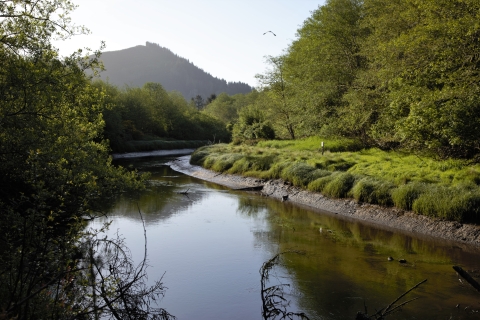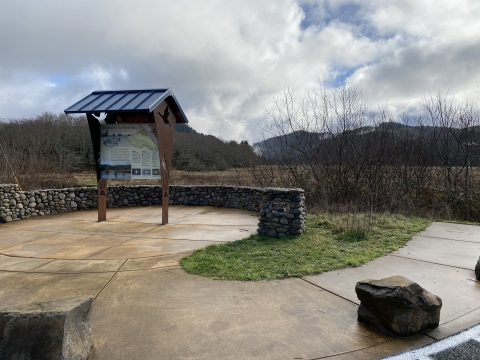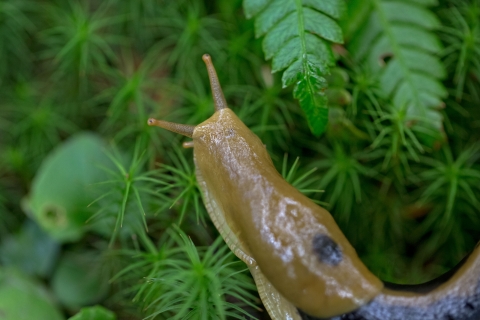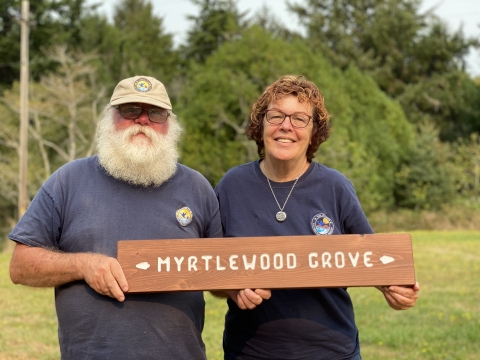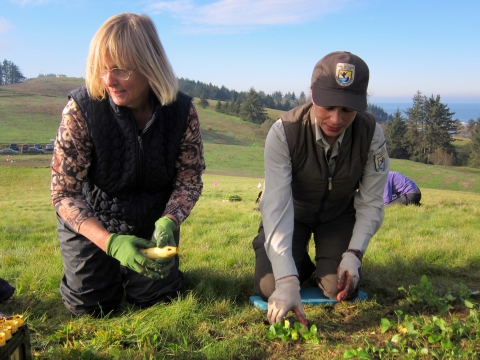Visit Us
National Wildlife Refuges offer a chance to unplug from the stresses of daily life and reconnect with our natural surroundings. Siletz Bay National Wildlife Refuge is an environment of transitions: freshwater to salt, shaded canopy to exposed delta, turbulent river to stilled embayment.
Even the inhabitants are in constant flux, from amphibians metamorphosing in bogs and resident birds donning breeding plumage in spring to spawning salmon—born in freshwater and raised in saline depths. Bring binoculars, a spotting scope or camera: there's a wealth of wildlife to be found at Siletz Bay Refuge.
Location and Contact Information
About Us
Established in 1991, the formerly diked pastureland maintained for dairy cows is now host to a plethora of native wildlife. Red-tailed Hawks, Bald Eagles and other raptors roost on salt-killed snags, anadromous fish seek shelter in submerged vegetation, and a variety of estuary-dependent birds including Great Blue Heron, Great Egret and many species of waterfowl forage in the tidally-influenced waters.
What We Do
The U.S. Fish and Wildlife Service conserves and monitors plants and wildlife, manages and restores habitat, and provides outdoor recreation for the public at the nation’s more than 550 National Wildlife Refuges.
Our Species
Shallow open waters, salt marsh salt marsh
Salt marshes are found in tidal areas near the coast, where freshwater mixes with saltwater.
Learn more about salt marsh , mudflats, sandy beaches, sea grass beds and sheltered channels form the complex tapestry of habitats characteristic of estuaries, where rivers meet and mingle with the sea. Though protected from the full force of the ocean’s pounding waves and buffeting winds, estuarine plants and animals must deal with the rigors of exposure, submersion, and fluctuation in salinity with each tidal cycle.
Get Involved
From its start in 1903, the National Wildlife Refuge System has owed its very existence to concerned citizens eager to protect America's natural resources.
Projects and Research
To help plants and wildlife, Oregon Coastal Refuge staff uses a variety of habitat management techniques to maintain, recover or enhance plant and wildlife values. Refuge staff carefully consider all management techniques, employing those best-fit to the situation at hand. The varied approaches we take to benefit wildlife is commensurate with the array of species and habitats we're charged with protecting.



